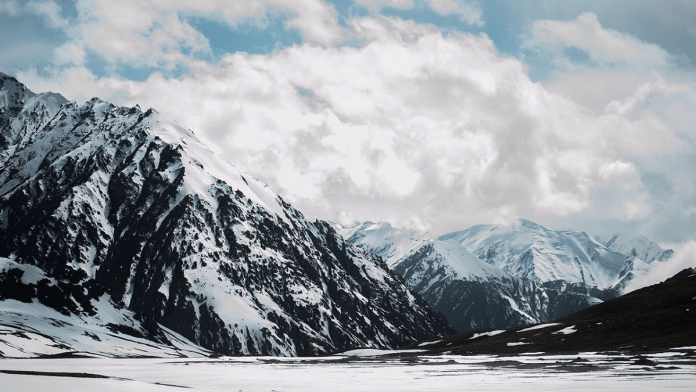New Delhi: Glaciers in the Karakoram region are in a stable condition, but those feeding the Ganga and the Brahmaputra river basins are melting at a faster rate, the Earth Sciences Ministry has said.
In reply to a written question in the Lok Sabha, the ministry said the mean retreat rate of the Hindukush Himalayan glaciers was 14.9-15.1 metres per annum, which varied from 12.7-13.2 metres per annum in the Indus, 15.5-14.4 metres per annum in the Ganga and 20.2-19.7 metres per annum in the Brahmaputra river basins.
“However, glaciers in the Karakoram region have shown comparatively minor length change (-1.37 ± 22.8 m/a), indicating the stable condition,” the ministry said, citing studies carried out by various institutions associated with the ministry.
The ministry, through its autonomous institute National Centre for Polar and Ocean Research (NCPOR), has been monitoring six glaciers in the Chandra basin (2,437 square kilometre area) in western Himalaya since 2013.
The Geological Survey of India has taken up a project on melting of glaciers in the Beas Basin, South Chenab basin and the Chandra Basin in Himachal Pradesh, and the Shyok and Nubra basin in Ladakh during Field Season 2021-22.
It said the Wadia Institute of Himalayan Geology (WIHG) was monitoring a few glaciers in Uttarakhand which reveal that the Dokriani Glacier in the Bhagirathi basin was retreating at 15-20 metre/annum (mpa) since 1995, whereas Chorabari Glacier in the Mandakini basin was retreating at 9-11 mpa during 2003-2017.
WIHG was also monitoring Durung-Drung and Pensilungpa glaciers in Suru basin, Ladakh, which are retreating at 12 mpa and approximately 5.6 mpa, respectively, the ministry said.
Melting glaciers have a significant impact on water resources of Himalayan rivers due to change in glacier basin hydrology, downstream water budget, impact on hydropower plants due to variation in discharge, flash flood and sedimentation, it said.
They also increase the risk related to glacier hazards due to enhanced number and volume of glacier lakes, accelerated flash flood and Glacial Lake Outburst Floods (GLOFs), impact on agro practices in high Himalayan region, the ministry said.
This report is auto-generated from PTI news service. ThePrint holds no responsibility for its content.
Also read: A glacial lake in PoK is threatening people, and could mean the Indus river basin is drying






